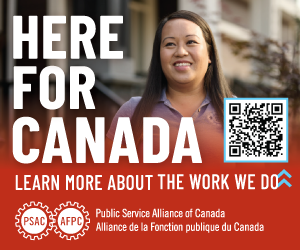-

Shaping Neighbourhoods: Montréal’s Community Organizations and the (Neo)Liberal Agenda
Strong community organizations are an important feature of Montréal that contribute to its social and political fabric. Recently, the relationship between the community sector and the provincial government has been gradually formalized through regional- and provincial-level tables representing the diversity of the community sector.
-

Fighting for My Town: Looking Forward by Looking Back
We’ve lost ground in Toronto. Yes, we’ve made significant gains on a number of issues and in electing a progressive mayor and council. But the gauge that we used to determine what we are fighting for has shifted backwards over the last 20 years. We need to recognize this to move forward.
-

My Urban Rez
am part of the massive migration of Aboriginal peoples to the city. I was raised by a single mother who moved us to Edmonton (and many other places) from the Heart Lake First Nation to avoid residential school for my siblings and me. Since then, and I have been on my own since I was 16 years old, I have lived in many sites: small towns, the bush and the highways, but the longest period of my life has been in the Urban Rez, especially Winnipeg and Edmonton.
-

Making Low-Income Women of Colour Count in Toronto
Poverty is the women’s biggest challenge, and even their tough resourcefulness cannot overcome the impossibilities this condition creates in their lives. Yet the women, many of whom are racialized immigrants, have insistent dreams of better and more independent lives. Managing rising levels of stress and ill health, Toronto’s low-income women try to make the impossible possible.
-

The Fight Against Globalization Must Begin at Home
The barrier to popular resistance today is neither that people think the world is fine, nor that people are passive; rather, it is that, with no reason to believe that real change is on the agenda, people actively pursue other survival options.
-

CLC Policy
We agree with the Canadian Labour Congress’s controversial position paper that free trade has not been a total “economic disaster.” But we disagree that economic integration has gone so far that measures to reduce our dependency and challenge this right-wing direction cannot be contemplated. In this sense, the Canadian Labour Congress’s new industrial policy paper is a deep disappointment. Instead of insisting on new directions in economic policy, the CLC’s new paper lacks critical leadership, merely offering new concessions to free trade and the rule of the market.
-

The Raging Grannies, Blazing a Trail of Humorous Protests
With their disarming smiles, outlandish hats, arsenal of witty, spunky lyrics and outrageous actions, the Raging Grannies have become an institution in protest circles. They tap into an unending stream of creative ideas for songs and stunts to express their views. They challenge authorities and stereotypes, bringing a new approach to activism.
-

Adrienne’s Tour
Anti-poverty demonstrators jeered Governor General Adrienne Clarkson in September as she made a well-guarded, carefully scripted promenade through Vancouver’s Downtown Eastside. According to a spokesperson for the Anti-Poverty Coalition, the group offered Her Excellency a guided tour of Canada’s poorest urban neighbourhood, but she chose instead the “sanitized” version offered by Vancouver Mayor Larry Campbell.
-

Community Development in Winnipeg’s Inner City
If you look hard enough in the midst of Winnipeg’s sprawling and decaying inner city, you will see scattered islands of remarkable creativity and collective action: innovative community development (CD) initiatives battling the seemingly relentless spread of urban poverty. Most Winnipeggers are oblivious to this struggle: they choose not to know about it – or to care.
-

Health care on the mend?
Following hard negotiations at the government conference centre in Ottawa in September, representatives of the federal and provincial governments hammered out a new deal for health care. This new deal promises $18 billion in its first six years and $41 billion over ten, promising to create more homecare, shorter treatment waiting times and a national drug strategy.



